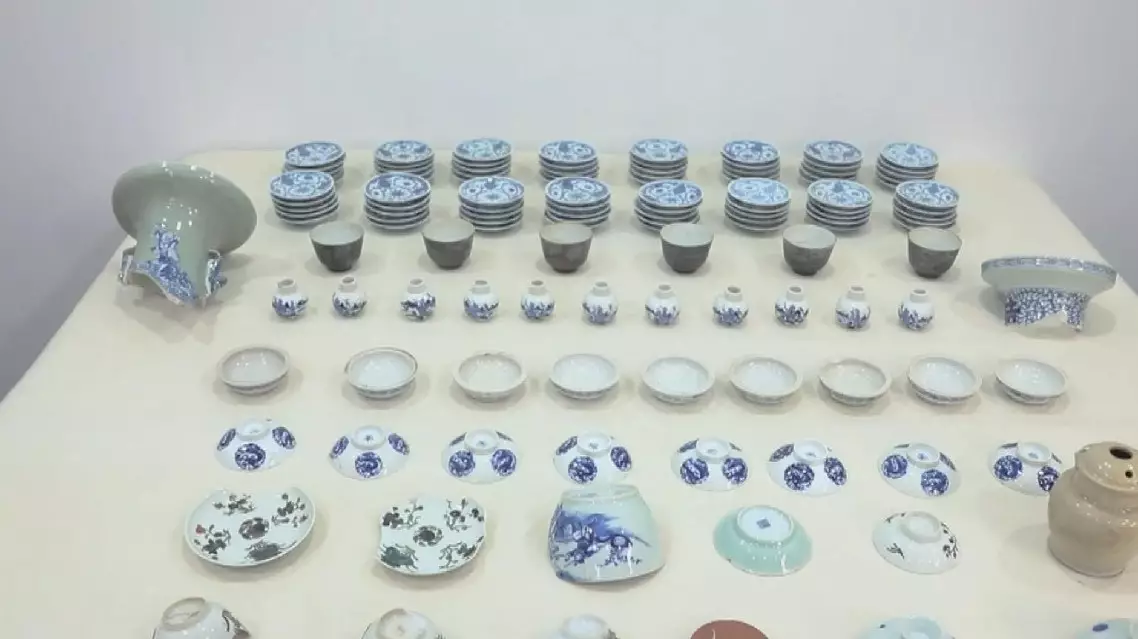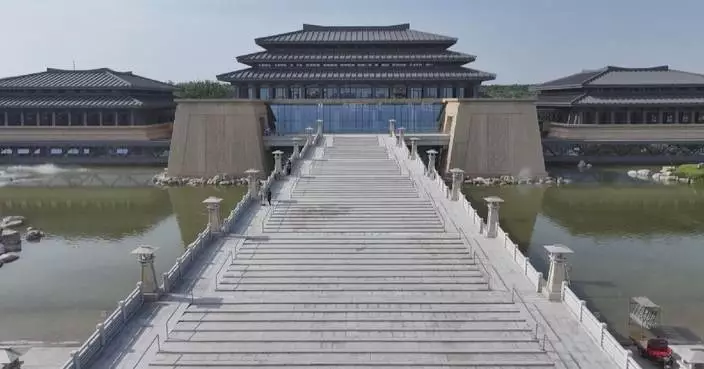The French people are looking forward to Chinese President Xi Jinping's visit and have expressed their strong support for increased cooperation between the two countries.
At the invitation of French President Emmanuel Macron, Xi started his state visit on Sunday. It coincides with the 60th anniversary of the establishment of diplomatic ties between the two countries and is of great significance in building on the past achievements and opening up new prospects for bilateral relations.
"We are very happy to have the Chinese president to visit here. Europe and the United States need to cooperate with BRICS countries, especially with China. It's good for tourism and the economy. Now that the economy is globalized, we need to communicate and cooperate with each other. Whether it's with China, Russia or other BRICS countries, we should support this," said a resident of French capital of Paris.
"[The Chinese flags are here] because Chinese President Xi Jinping will come to France. China supplies a lot of products to France. Many products made in China are sold in France. France also sells products to China, such as the Airbus," said a resident.
"We're preparing for the visit by the Chinese president. I think he (President Xi Jinping) will come to France soon. It's a very important visit because China is very important when it comes to the economy, environment and sustainable development. That's why this visit is so important. China is developing very fast. Now. China is a very important country in the world. China is not only developing its own economy, but also developing relations with other countries, especially with Europe and France. China is very popular in France," said another resident.

French people expect Xi's upcoming state visit to further bilateral cooperation
Archaeologists from Shanghai-based Fudan University have hailed the game-changing role of ancient DNA in exploring China's rich history, as the innovative approach has become a cornerstone in unearthing mysteries of the past, helping researchers to delve deeper into the stories of ancestors.
Led by Wen Shaoqing from the university's Institute of Archaeological Science, the team has made ground-breaking achievements in identification of flora and fauna as well as sediments in ancient times.
Wen took artifacts uncovered during the salvage of the Yangtze River Estuary No. 2, China's largest and best-preserved ancient underwater wooden shipwreck.
"For example, we took a big amphora with a height of some 60 centimeters out of the Yangtze River Estuary No. 2 salvage. The DNA approach showed the content inside the jar was divided into two layers, with the upper part being basically aquatic and the lower of the rest 30 centimeters related with land. Rice DNA is dominant among all DNA extracted from the jar. Why? Because there were too many cups inside the amphora. To save space, cups were put together closely and tightly. When we separated cups from each other, we found rice husks crammed between cups. Then we got to know that the rice husks were used to prevent the cups from getting crushed. So rice husks were put inside as [shakeproof] stuffing," said Wen.
What's more, the archaeological team detected bamboo DNA from the relics, revealing new findings of the shipping lines.
"The cups used to be tied up with bamboos when being packed. But we can't see these bamboos inside as they had already got rotten. The detection of bamboo DNA and rice husk DNA showed that these things were from Jiangxi Province. And the porcelains were from Jingdezhen in Jiangxi. We then came to a conclusion that the sunken ship had anchored in Jiangxi, where the Jingdezhen ceramics were transported aboard. As for the sunken ship, at least we know that it sailed from Jingdezhen before the submergence," he said.
Wen also said the sediments in the shipwreck is of great significance to uncover more mysteries.
"If a cabin was overrun with escherichia coli and the like, it was believed to be a restroom. From the fouling on the bottom of the ship, we can probably know where it had been to. That's because different microbes were attached to the bottom of the ship when it sailed to different waters, which can tell us its whereabouts. In other words, we're salvaging a piece of history instead of a shipwreck. These sci-tech methods help us fully unfold these pieces of history. It surely carries the greatest significance in our archaeological work." Wen said.
The Yangtze River Estuary No.2 was a sailing ship from the reign of the Tongzhi Emperor of Qing Dynasty (1644-1911). The shipwreck is about 38.5 meters long and 7.8 meters wide, and it contains 31 cabins. The ship is "sleeping" under the waters northeast of Shanghai's Hengsha Island, with its hull buried 5.5 meters under the seabed.

Archaeologists highlight DNA approach to unlocking historical mysteries










